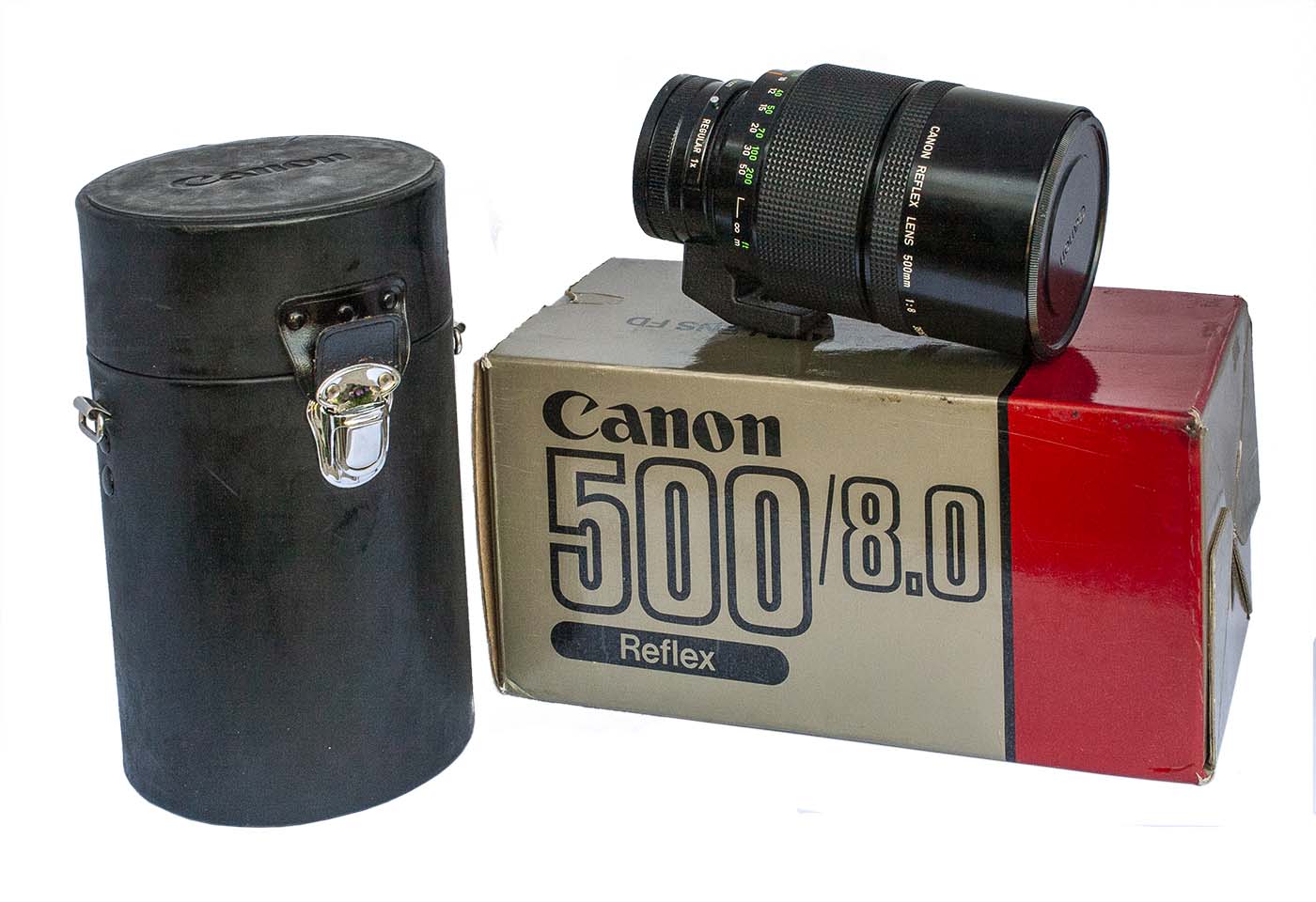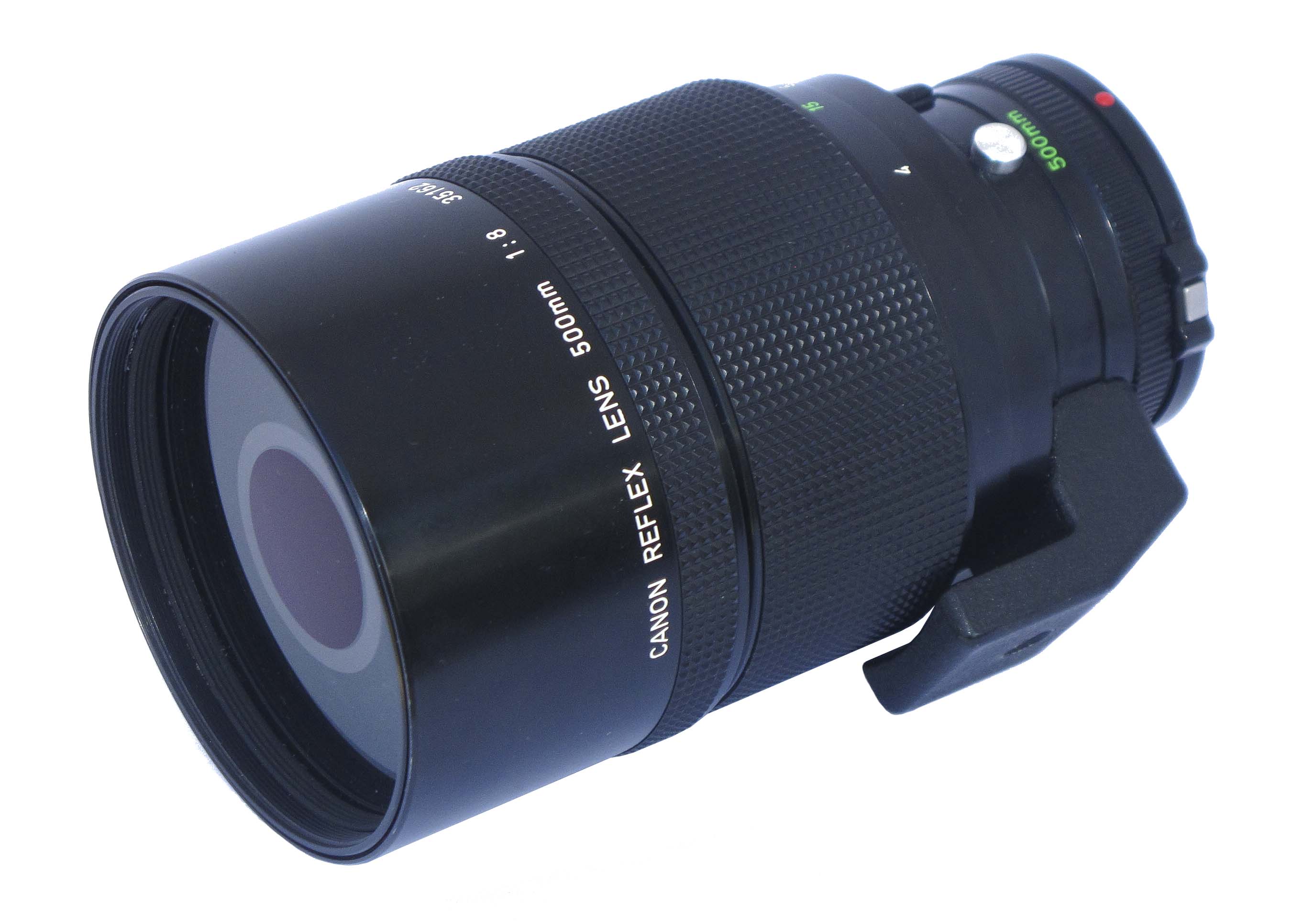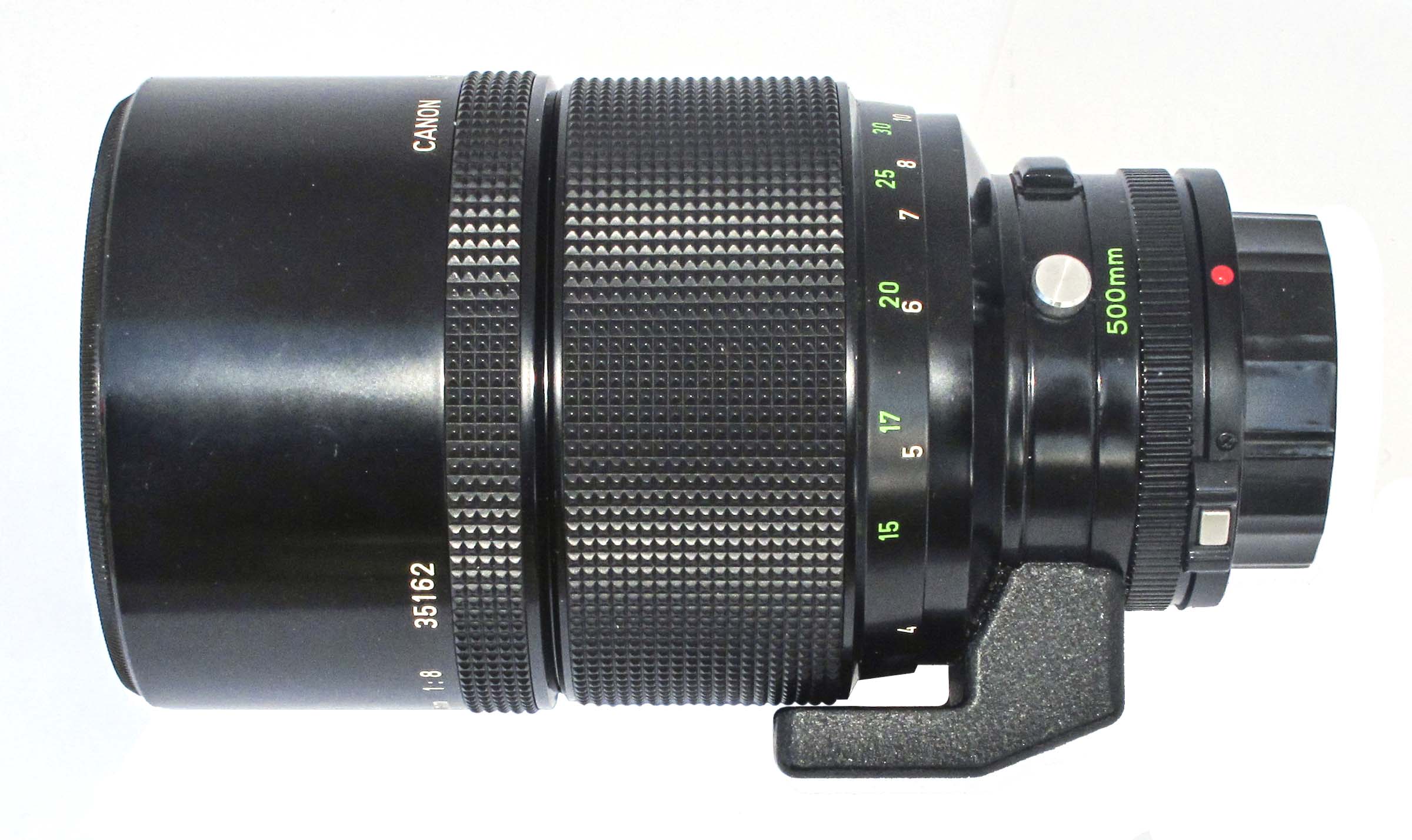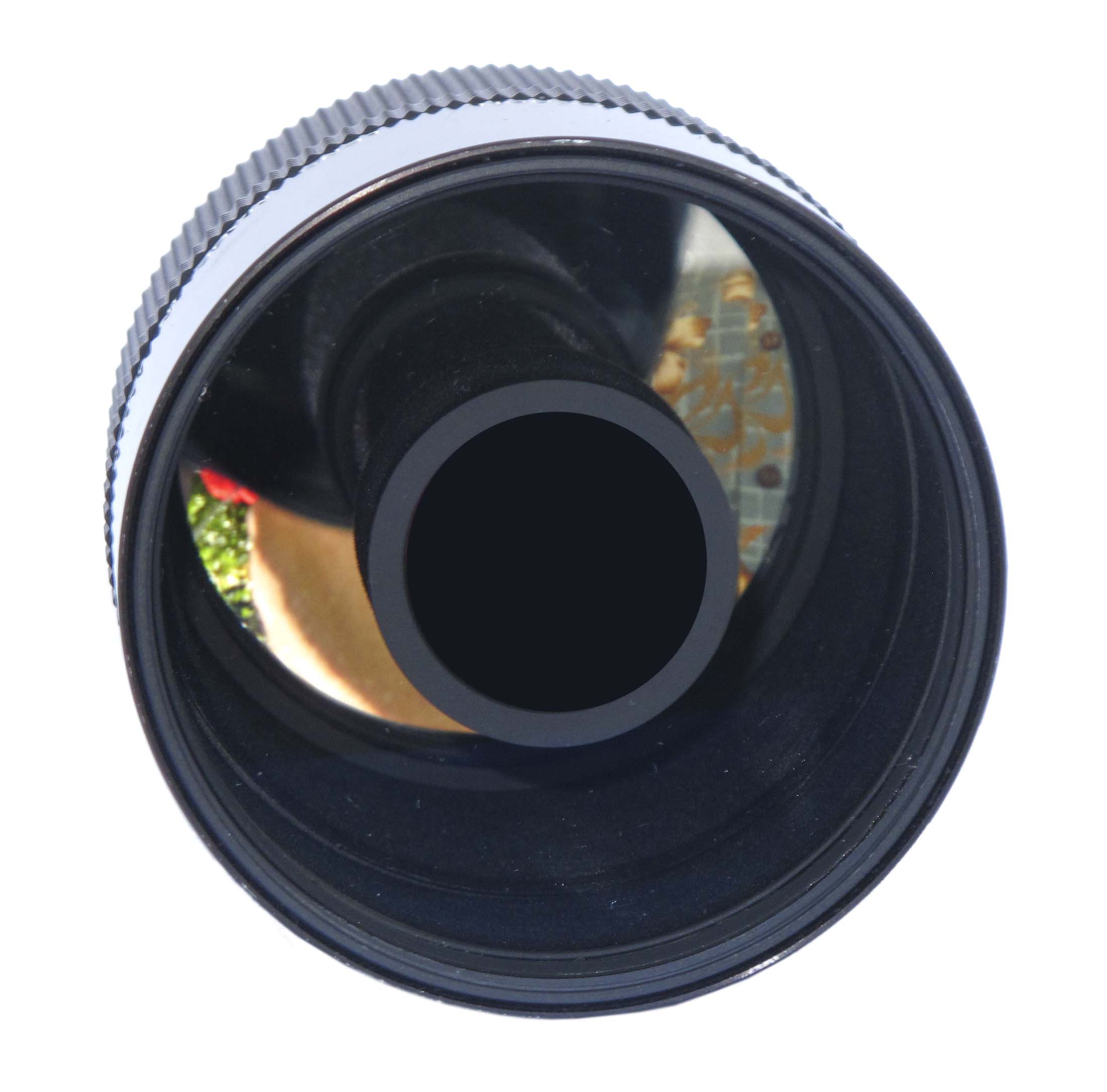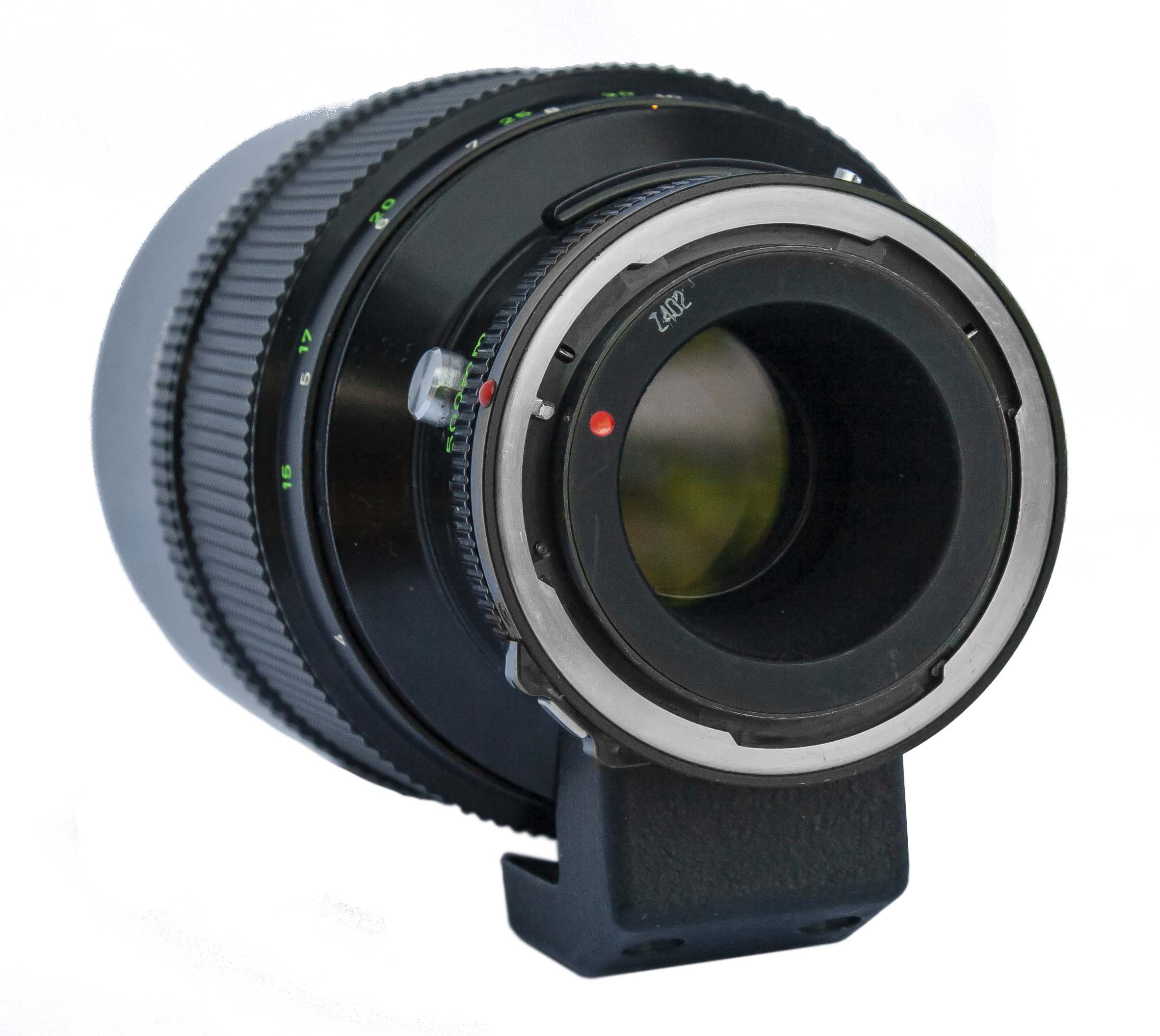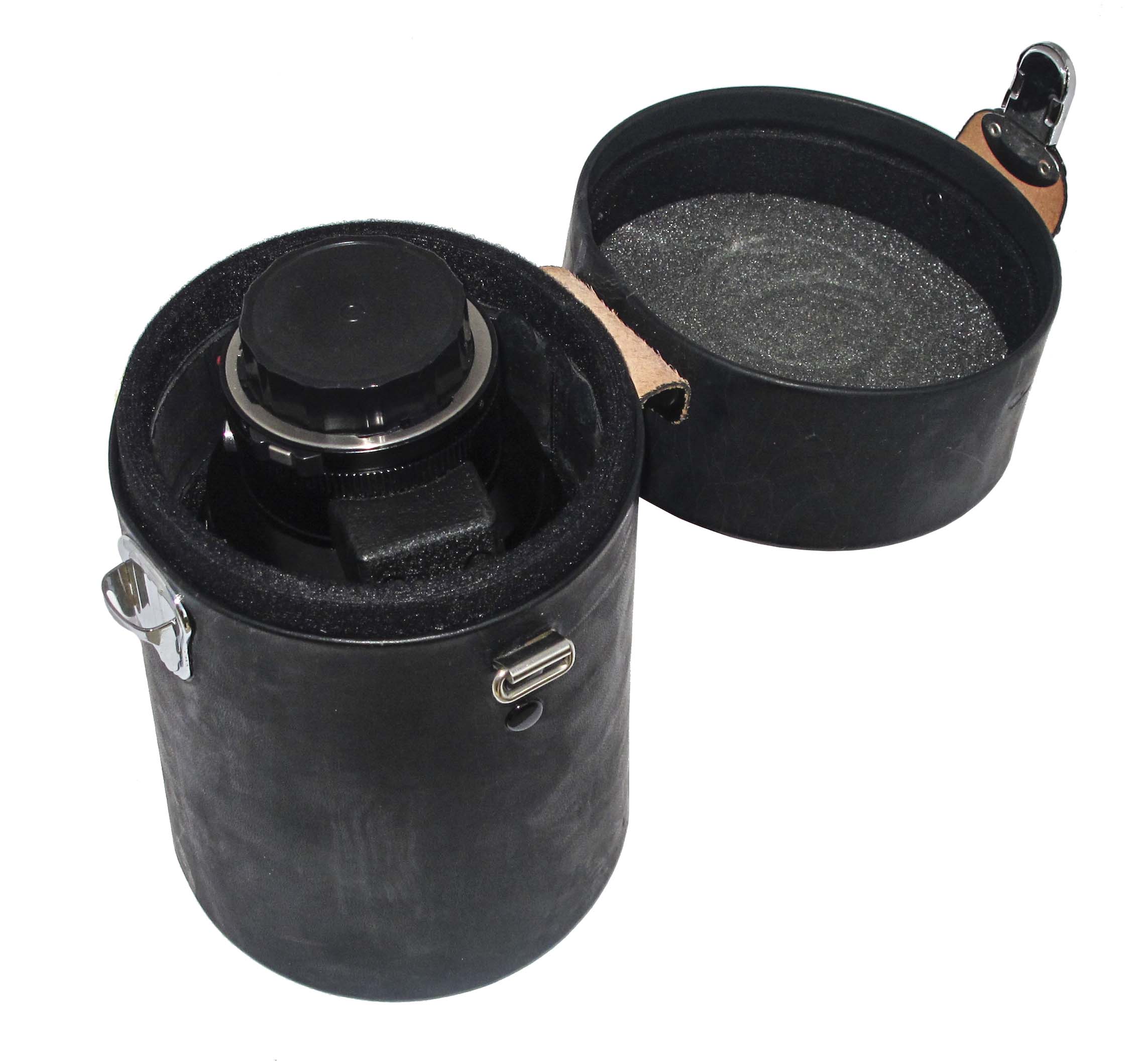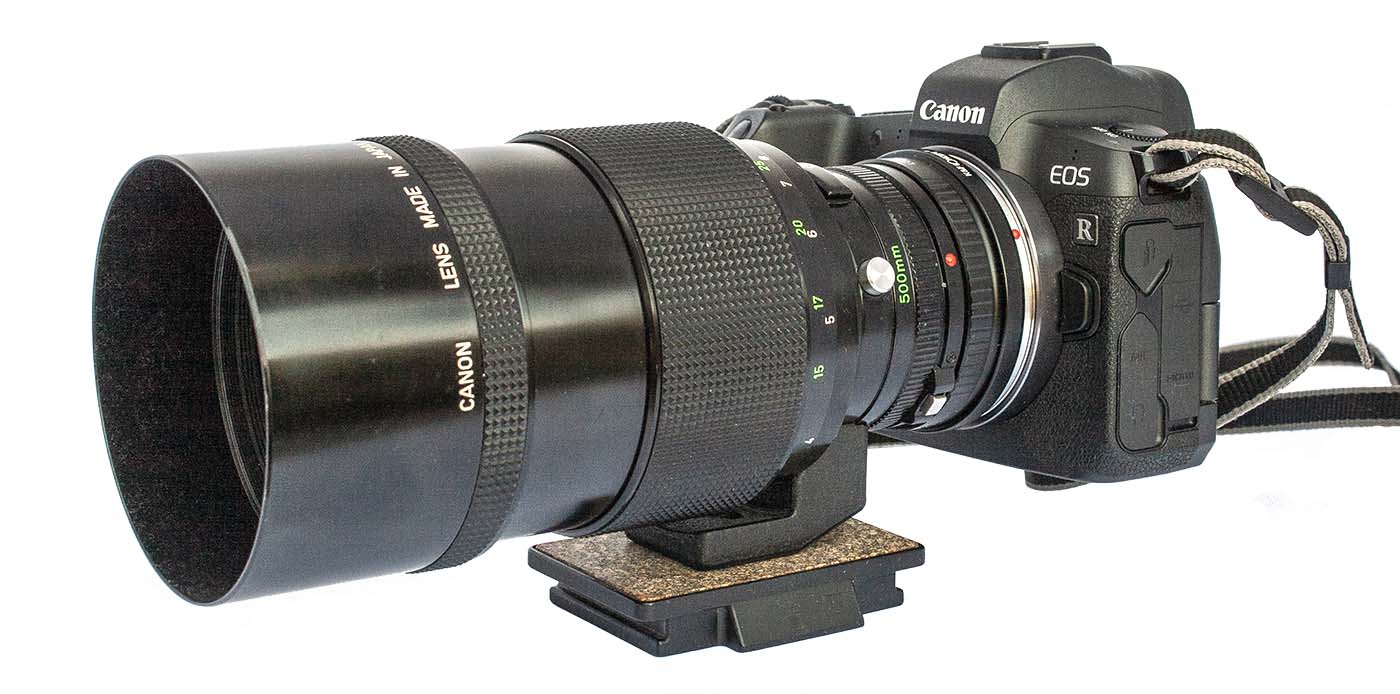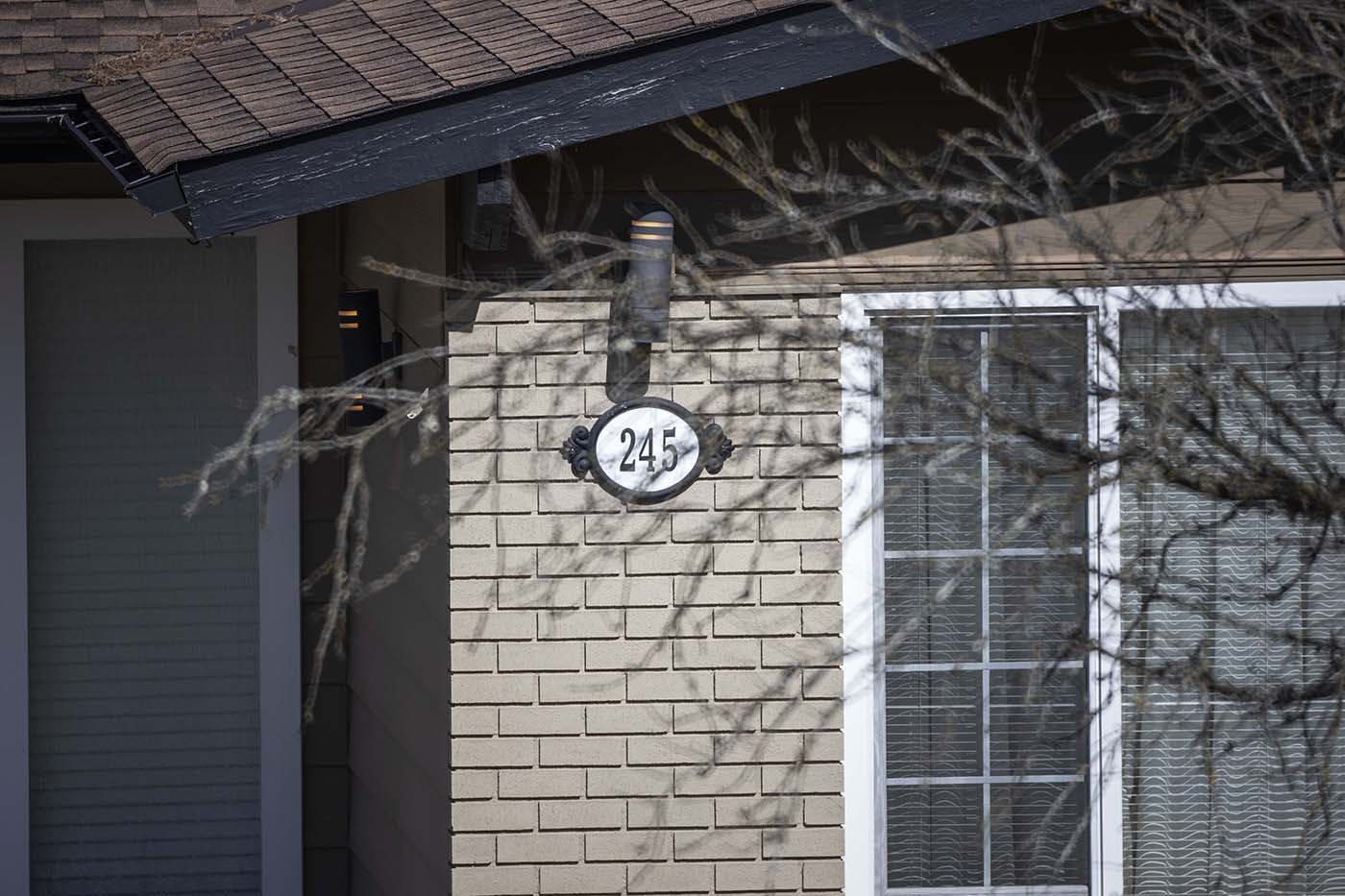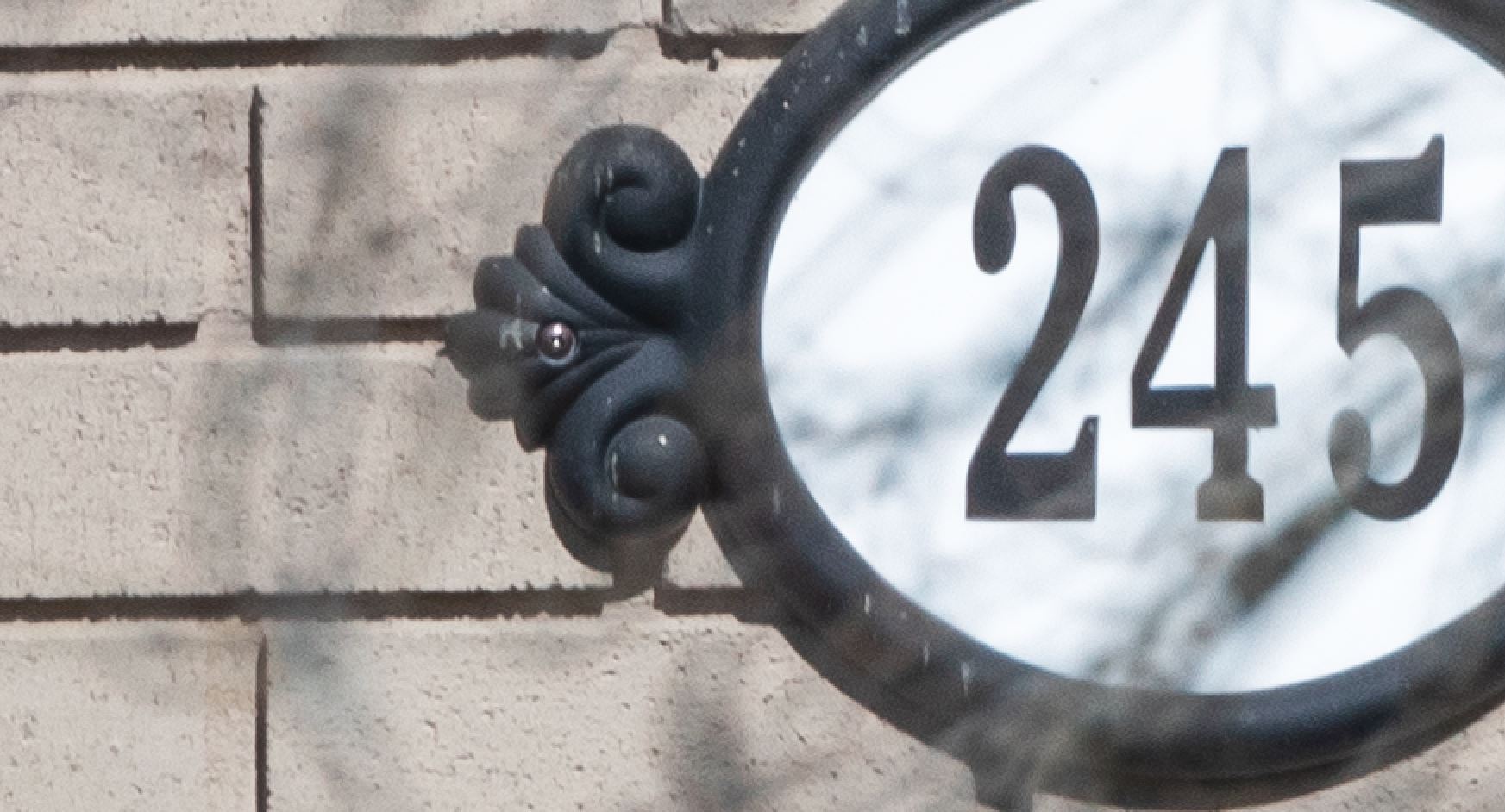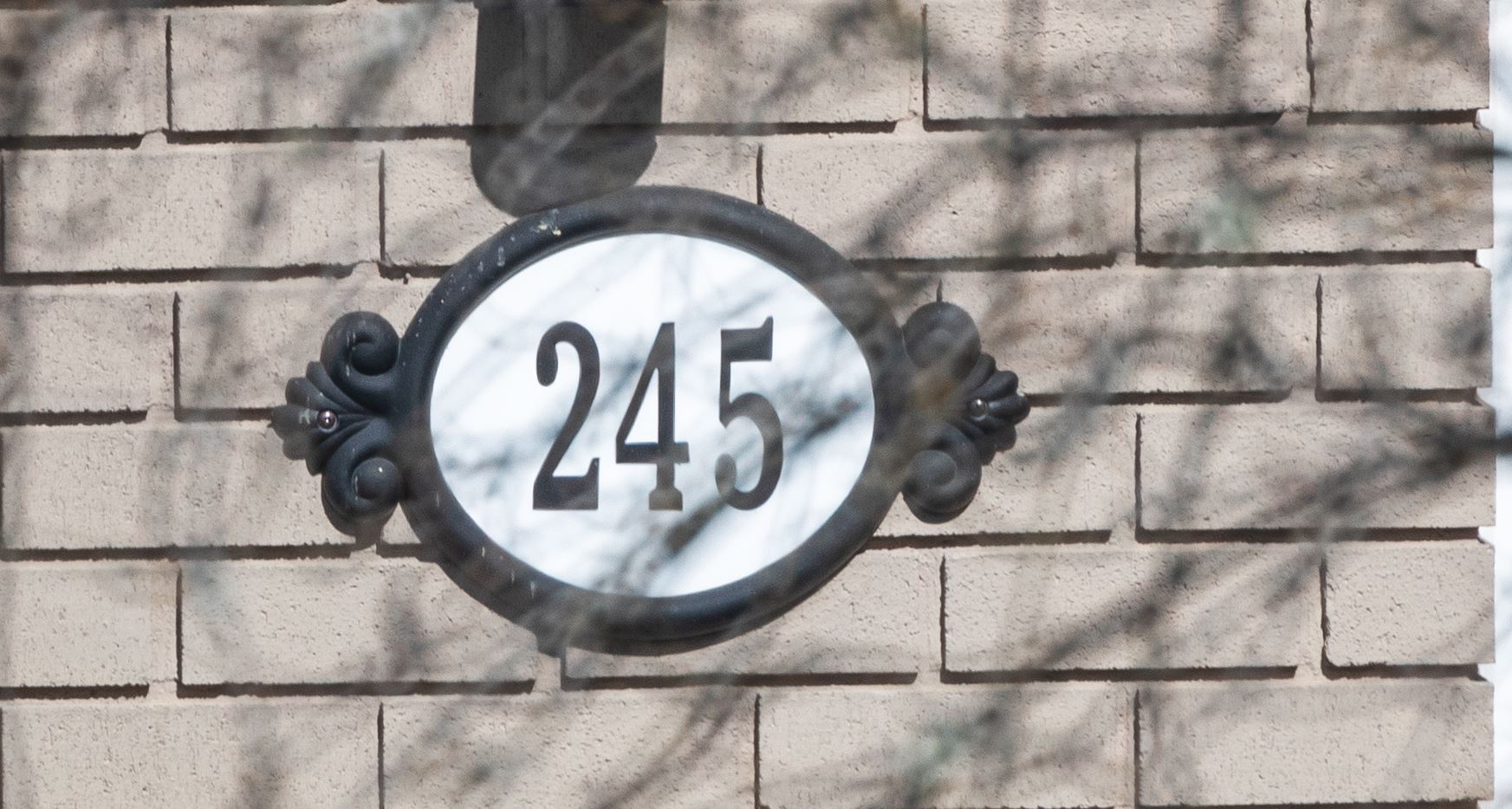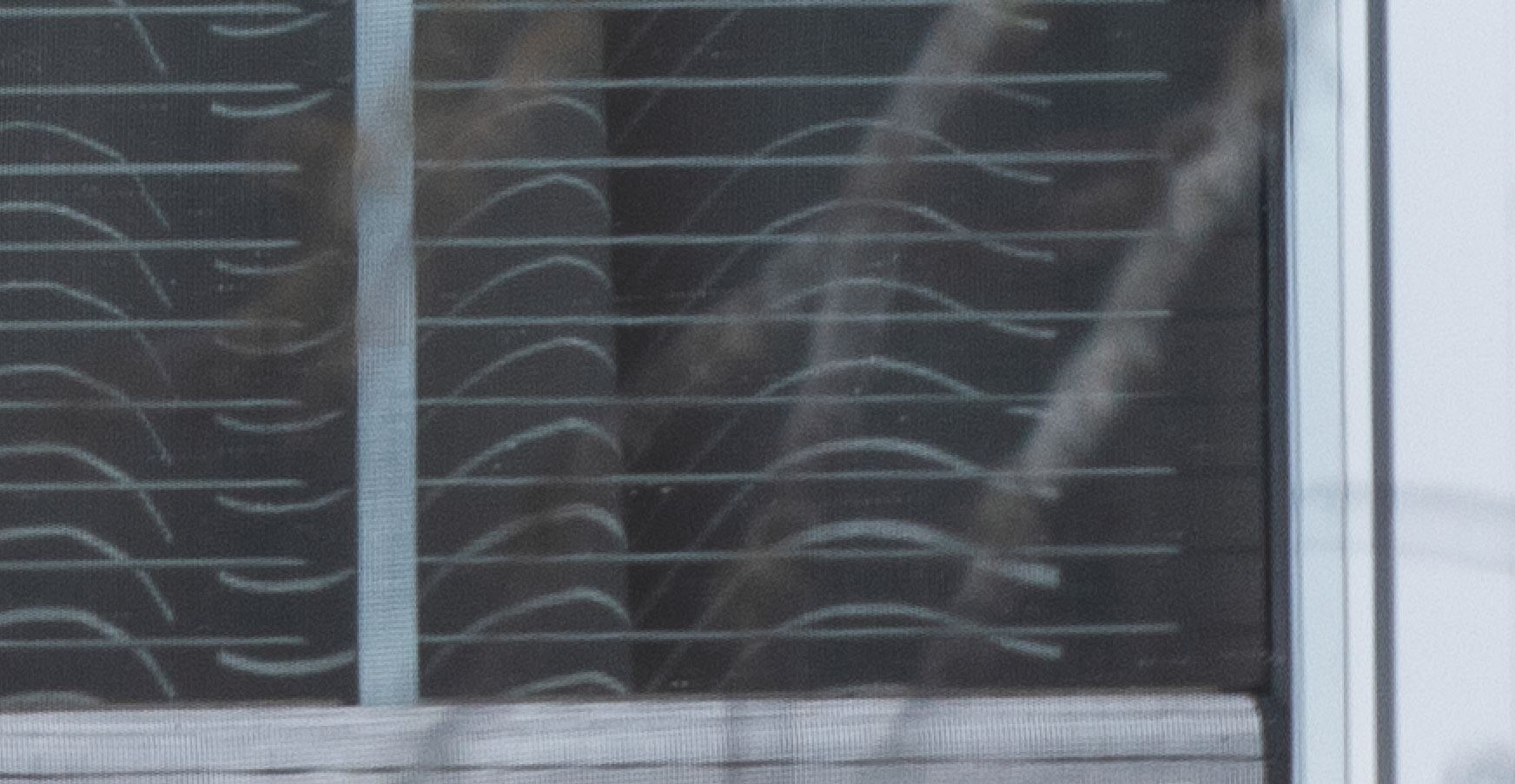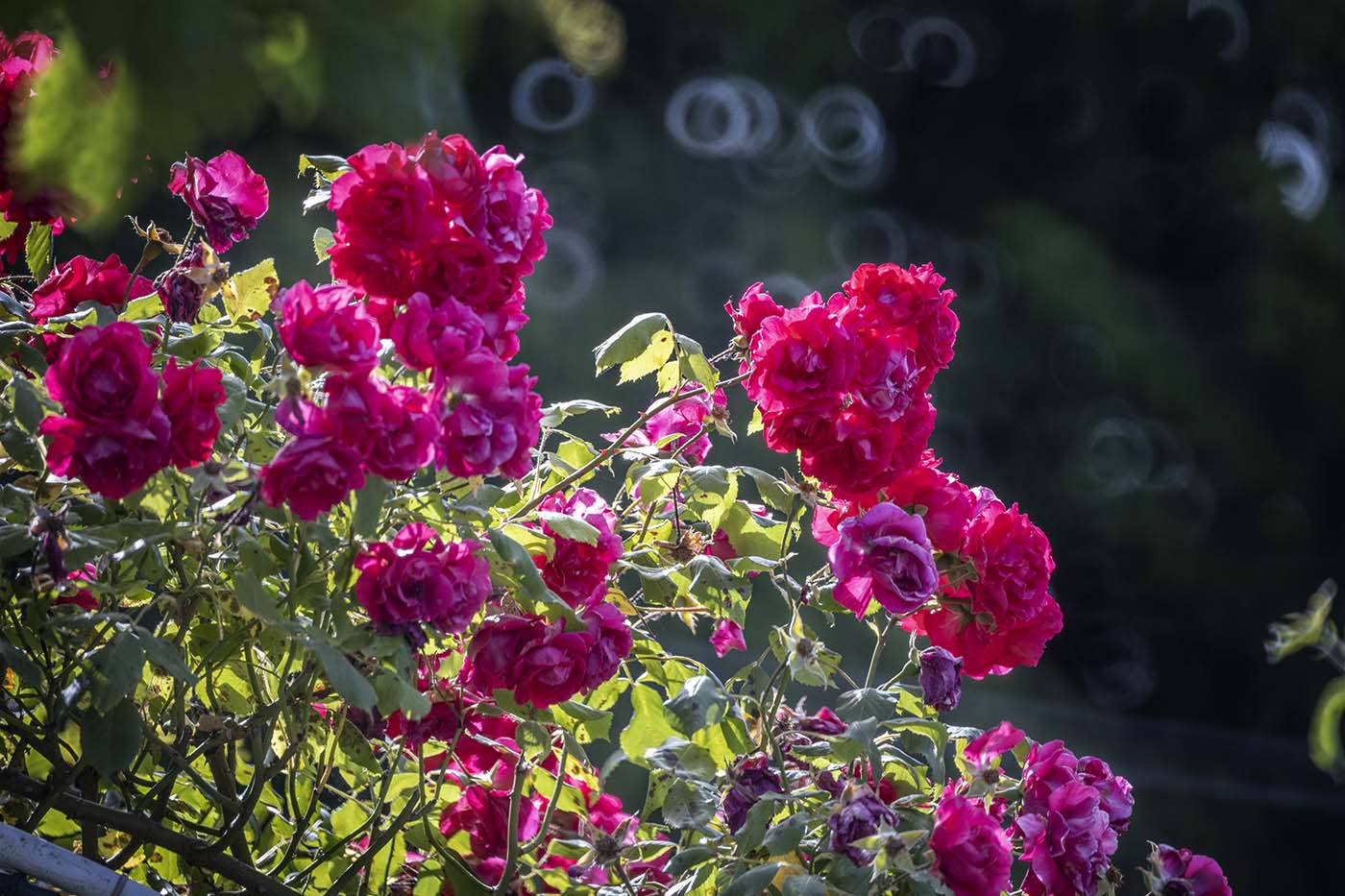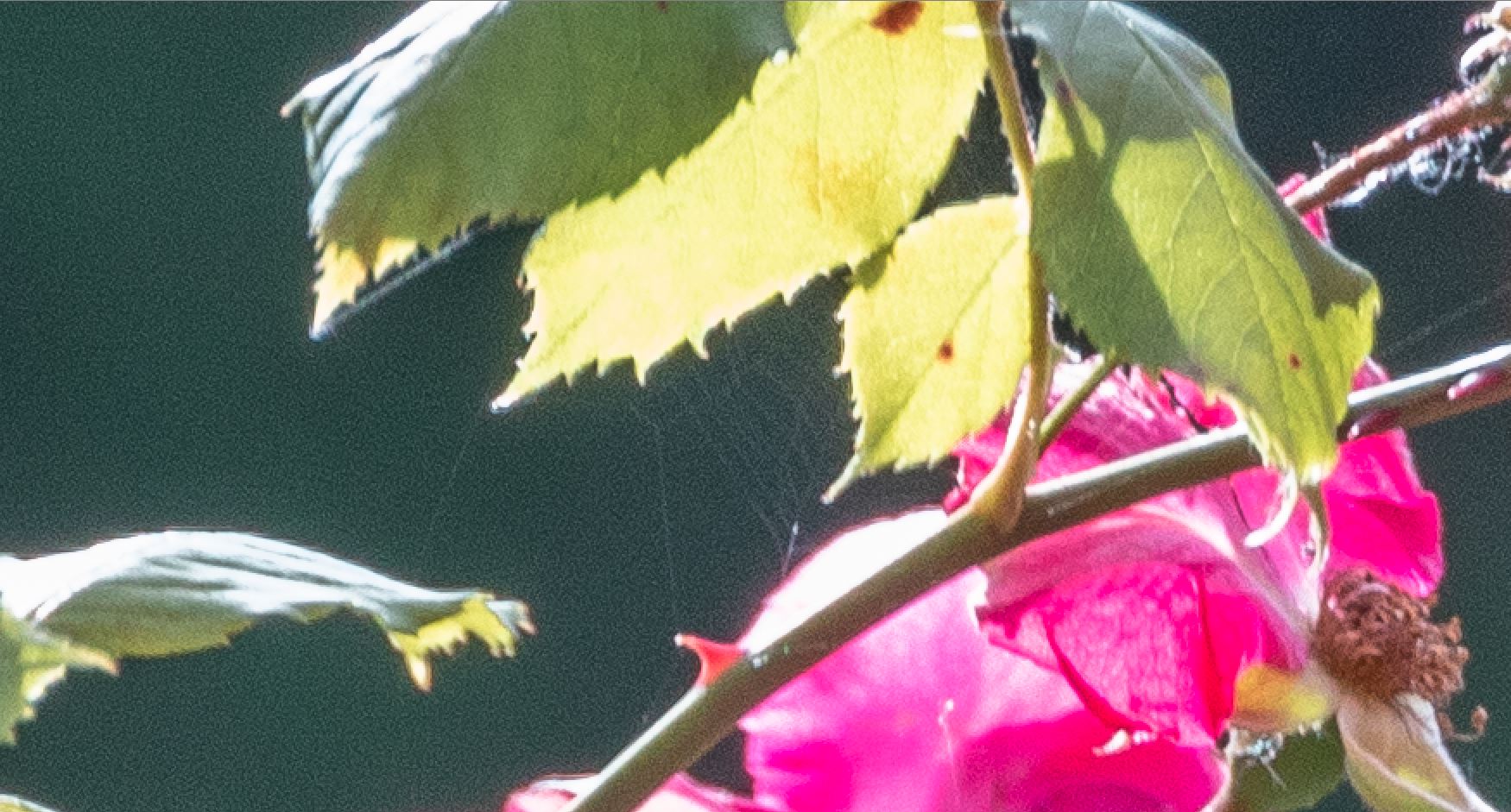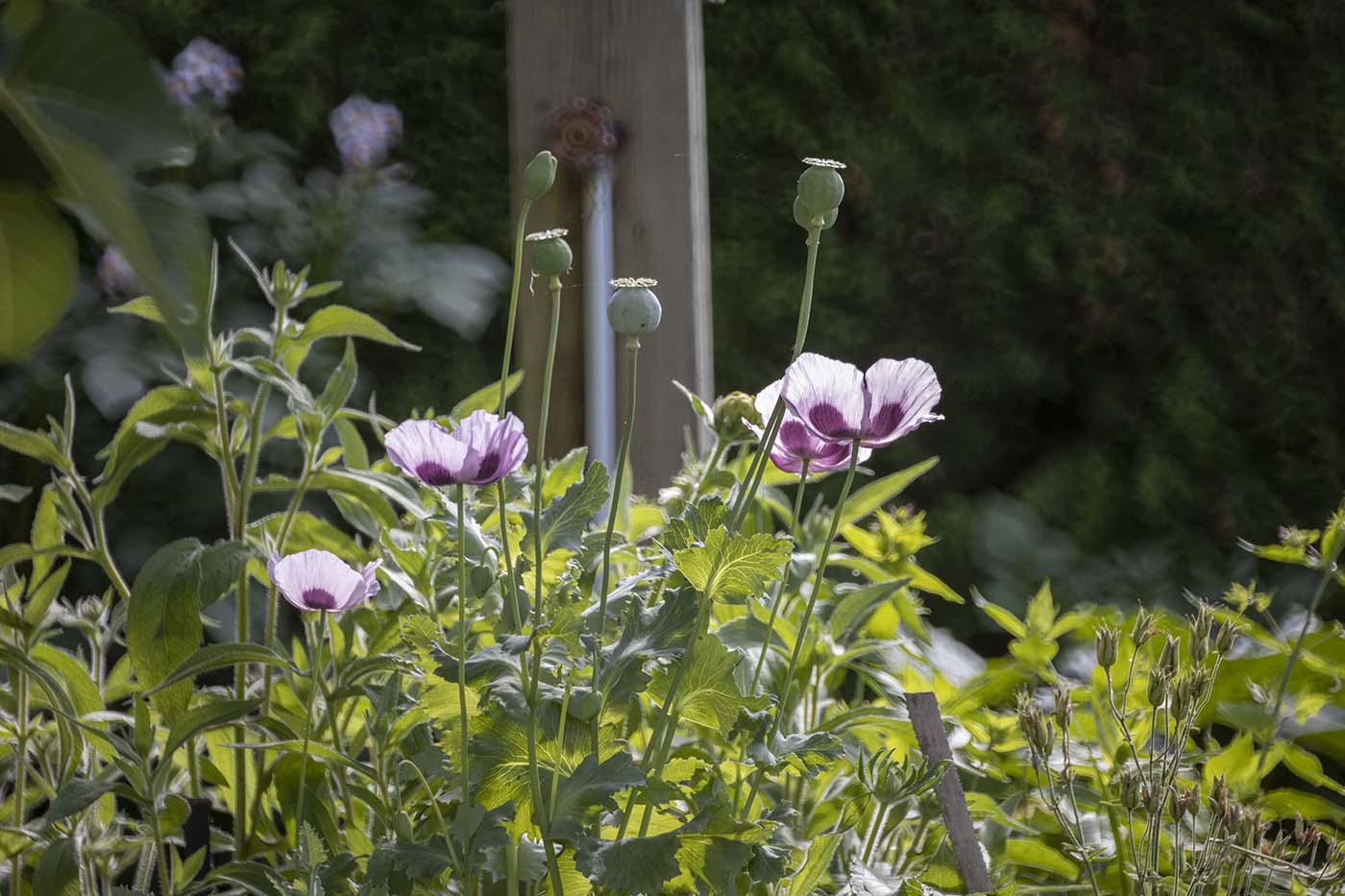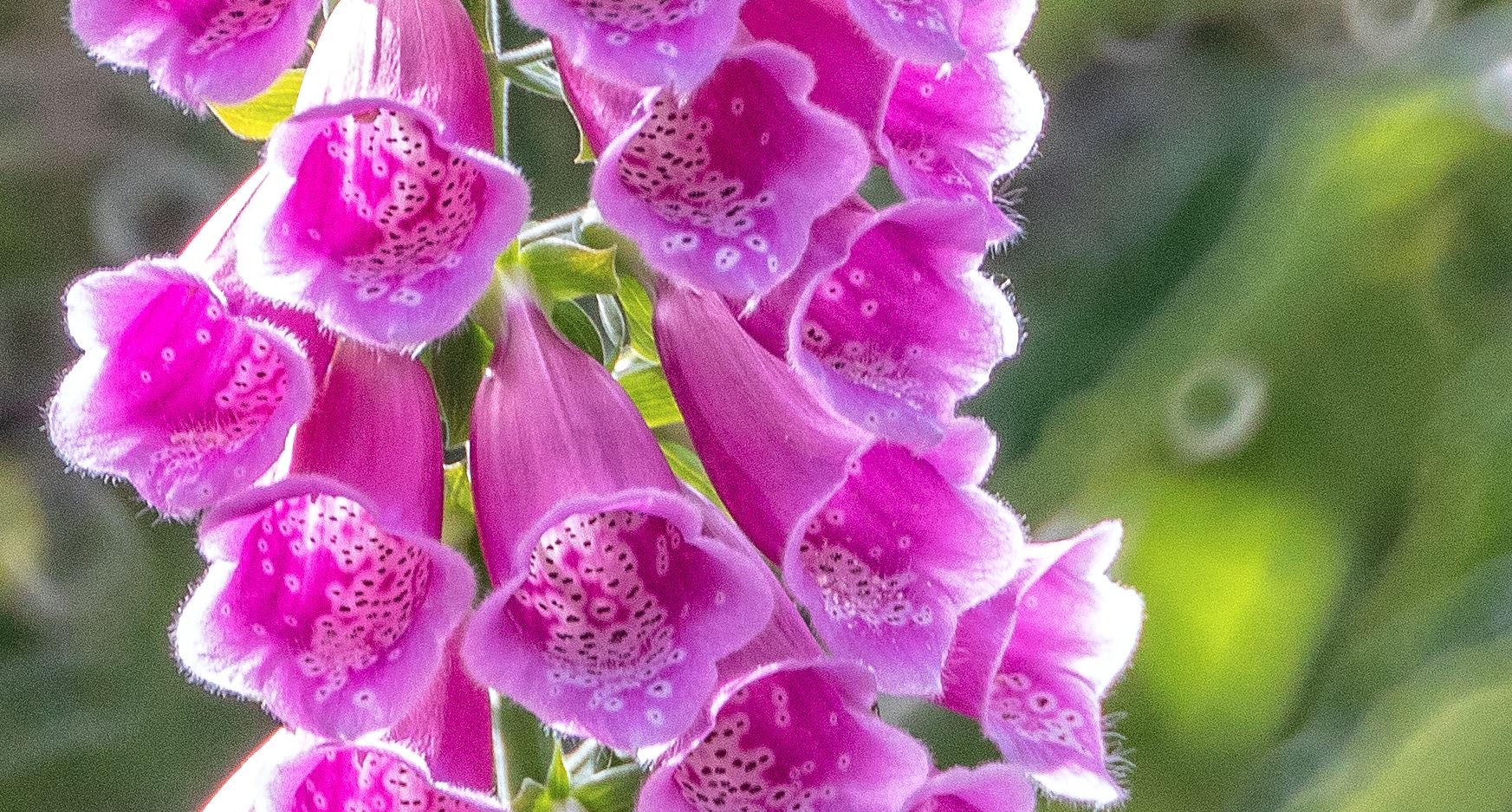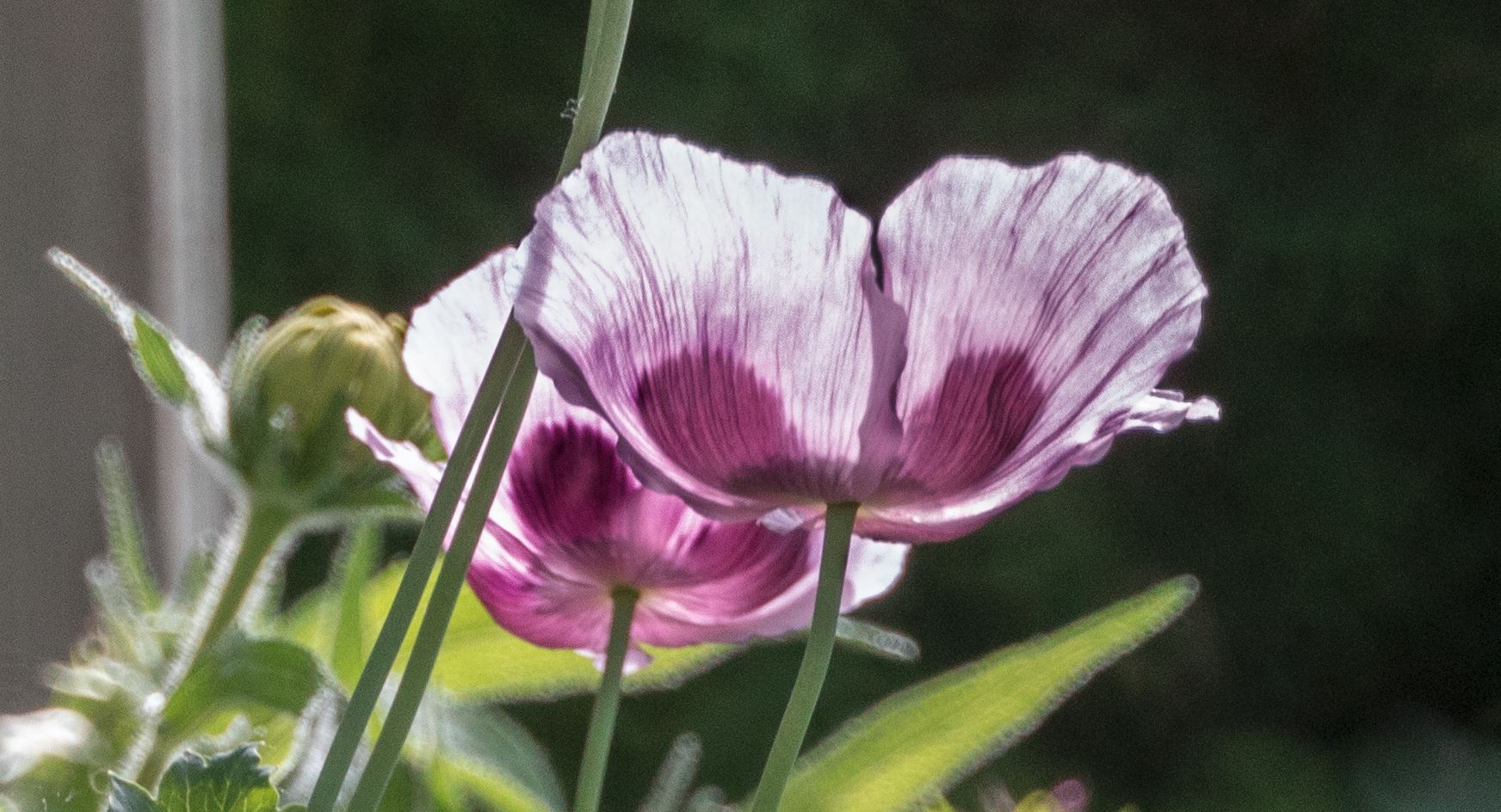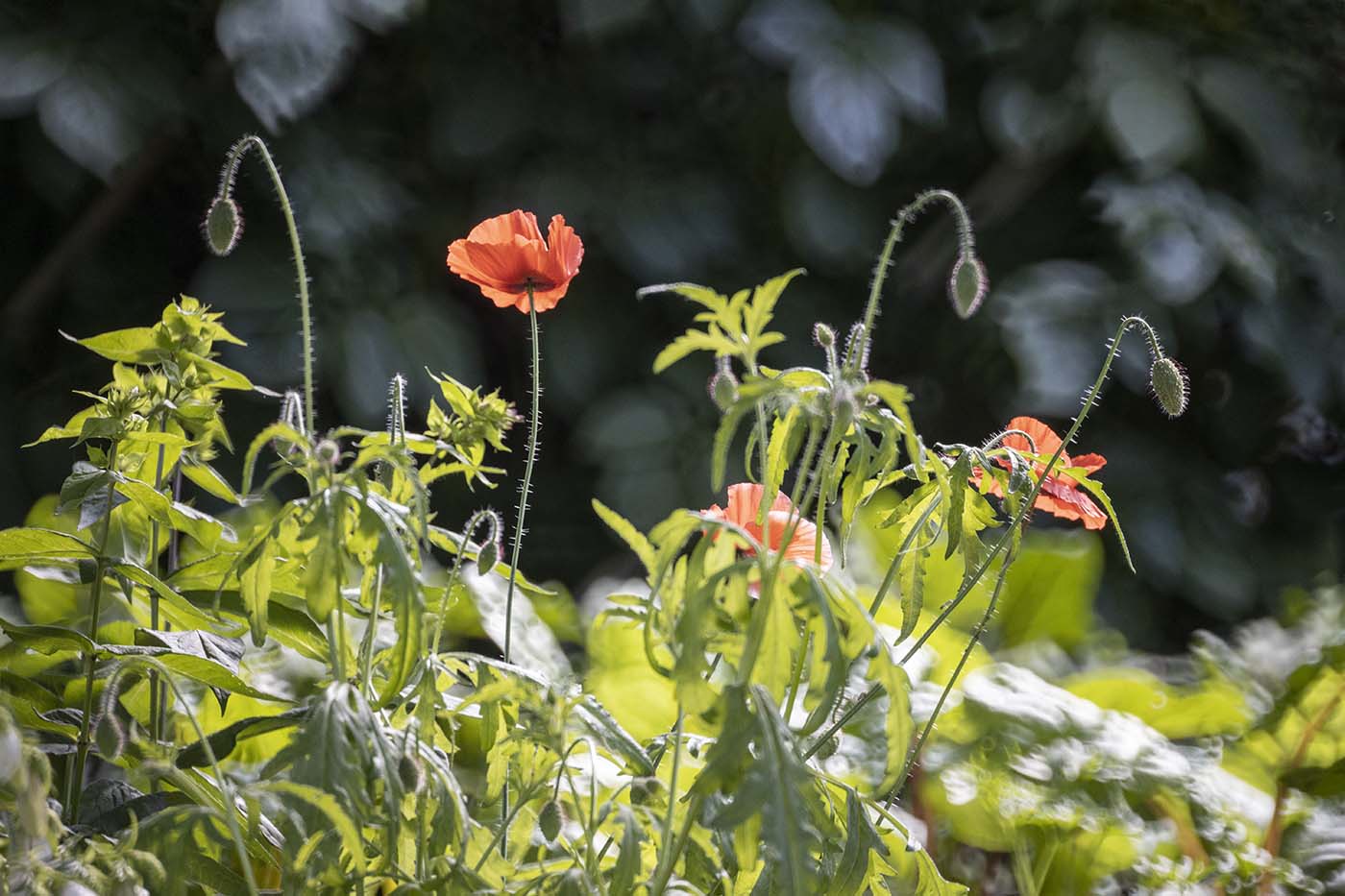FDn 500mm f/8.0 Reflex
I have always seen third party “mirror” lenses advertised for Canon cameras but it came as a surprise to me that Canon actually made such lenses in the 70’s and 80’s. They called them “Reflex Lenses”. When the opportunity to acquire one came along curiosity got the best of me.
The Reflex Lens has a couple of things going for it. The first is size. Because the light path is reflected back on itself, thus the term Reflex, the overall length of the lens is much shorter than the equivalent focal length in a standard construction lens. The size reduction is about 50%. The second positive is that there is much less glass in such a lens and so the weight is much less by as much as 60%. This makes such lenses small, compact and easy to carry around.
That being said, there are some down sides. You might think that such light small lenses could be hand held. Wrong! The long focal lengths make that impractical. All of these lenses are manual focus and the depth of field is paper thin. On my example I find the focus ring, although velvety smooth, is so sensitive that obtaining accurate focus is very difficult, even on a tripod. To use this lens effectively, good solid support is required.
In this diagram the mirror elements are shown in pink while lenses are blue. The light passes into the lens and reflects back to the front off the main mirror. It then reflects again from a mirror on the back of the front element and passes through a hole in the main mirror. The folded light path is plainly seen.
Another objection to these lenses is in the bokeh: point sources appear as soft fuzzy donuts which people find disconcerting.
Reflex lenses, because of their structure, have no aperture adjustment. So it is necessary to control exposure through film ISO and shutter speed. The Canon lenses also have a rear mount 34mm filter position which can accommodate neutral density filters.
At the rear of the lens is a filter slot for a 34mm filter. The lens comes with a clear filter but neutral density and color filters were available from Canon. Notice there is no aperture pin on the lens mount which is not necessary if there are no aperture blades to be set at time of exposure.
Canon’s first Reflex lens was the FD 500mm f/8.0 S.S.C. which they introduced in September of 1978. Then in March of 1980 they introduced the FDn 500mm f/8.0 which appears to be the exact same lens with the updated lens mounting. Otherwise the lenses appear identical. There is very little information about these on the internet or the Canon Museum about their production numbers, technical details or construction.
500mm Reflex Lens on my Canon R
This the full frame from across the road.
Pushing the image even harder, this is a screen shot at 200%. Still sharp although a little soft. But soft is easy to deal with: I use software!
So how does this Reflex lens perform? Well, it should be good. The construction is the same as used on the Hubble Space Telescope and we all know that’s not a bad lens! But for general photography how are they? To find out I mounted my FDn 500mm on my Canon R, got out a tripod, went out in our yard and took some pictures to see for myself. All of the pictures in this article were taken within an hour without leaving the yard. As you can see, once again, my wife’s garden is my favorite subject.
However, as a first test I turned this lens, tripod mounted, on the house across the road. Let’s see how that test worked.
And this is a screen shot of the image at 100% magnification. Appears to be sharp as a tack. The black blurred lines are the branches of the tree in the foreground which are out of focus. Using this lens the first thing you notice is the critical focus. There is no depth of field and the focus ring is very sensitive.
Finally lets move away from the center. Going to the bottom edge of the frame and better than half way to the right corner we see the corner of the window which has an insect screen on it. This lens is resolving the screen itself! From across the road!
The Roses on the side of the house from about 30 feet away. Notice the circular donut shapes in the bokeh. This is a famous effect found in Reflex lenses.
At a 200% magnification you can see how thin the focal range is. At this magnification the image is beginning to pixelate but the sharpness is still maintained. If you look carefully, you will see this lens is resolving the stands of spider silk in the web on the flowers. This is from 20 feet away! As lenses go, this one is right up there.
So now the question is, “can it take a beautiful picture”? To figure this out I forgot about testing the lens and just enjoyed taking pictures with it. And here now are two examples of what I think are pretty good pictures with a somewhat difficult lens.
This is a full frame image of Lupins in Susan’s garden. This image would have been better as a vertical but I realized that too late.
The Lupins at 100%. I like the effect of this image. The bokeh is luminous and the flowers shimmer. As a vertical image the flowers would have been magnificent from top to bottom of the frame. The donuts are few and they could be dealt with in post processing with no difficulty. Actually, as I think about it, when I finish this page I’m going to get on this project.
Simple poppies in the garden. The poppies on the left are a full frame image. Above, they are shown at 100%. I like the colors this lens produces. Delicate.
All the shortcomings aside, this lens is fun and it can take an excellent image. It certainly outperforms the film available when it was manufactured. And with modern software a little softness or an annoying bokeh can easily be dealt with. This is not a lens I will use every day but it is a tool I will take with me. It is light and compact and I can think of many situations where I cannot get up close for that picture I want but with this lens I can.
Let me leave you with one final image from this lens. I am not going to comment on it. Just enjoy it.
This website is the work of R. Flynn Marr who is solely responsible for its contents which are subject to his claim of copyright. User Manuals, Brochures and Advertising Materials of Canon and other manufacturers available on this site are subject to the copyright claims and are the property of Canon and other manufacturers and they are offered here for personal use only.

